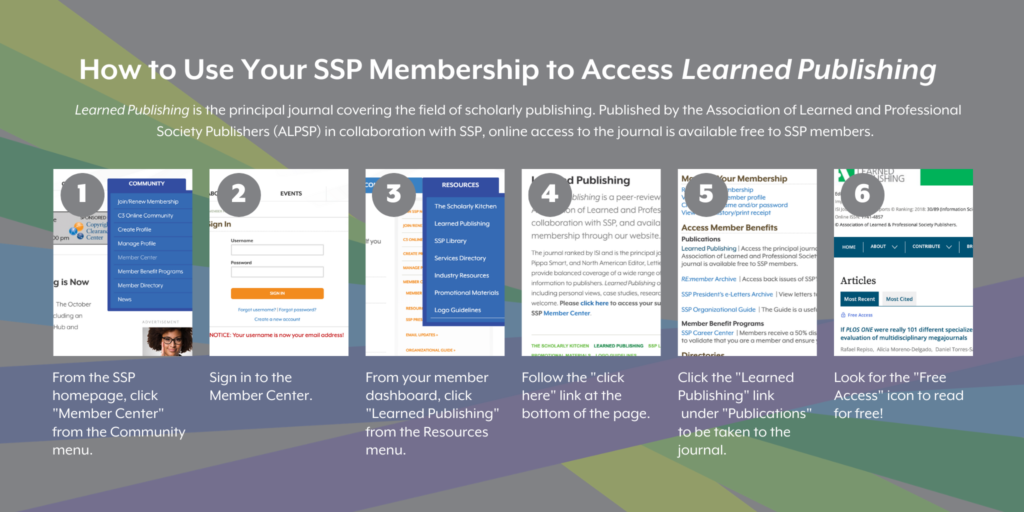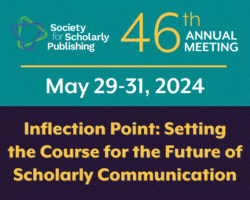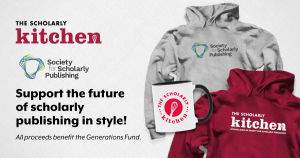
Now available in the newly published Volume 34, Issue 1 of Learned Publishing. Access to Learned Publishing is a benefit of membership in SSP. You can read the full-text online.
From sensemaking to sensegiving: A discourse analysis of the scholarly communications community’s public response to the global pandemic
Lisa Cuevas Shaw | Learned Publishing | Volume 34, Issue 1
Nearly 1 year has passed since the earliest days of the scholarly communications community’s initial public response to the global pandemic. It is important to reflect on the community’s earliest responses to this unexpected event as a means of evaluating issues of overall readiness, alignment, capacity, resourcefulness, and shared values. One method organization science researchers have used to evaluate the process of organizational sensemaking is to study language use in public discourse during a crisis. This study examines how organizational members of the scholarly communications community formally and publicly communicated their early responses to the global pandemic. A discourse analysis was conducted of press releases, blogs, and website updates across non‐profits, commercial publishers, government agencies, technology companies, and universities.
Key points
- Formally analyzing the scholarly communications community’s public‐facing communications in response to the pandemic offers insights into how the community – viewed in the aggregate as a complex system – made sense of the crisis.
- Early responses to the pandemic (March–May 2020) demonstrated relative system readiness, adaptability, resourcefulness, and a strong shared commitment.
- The range of initial offerings included support for Remote Accessibility; COVID‐19‐Related Content Aggregation and Curation; Enhanced Discoverability; Free Access; New Content, Products and Services; Research Support; and Revision of Business and Research ‘Rules’.
- Organizations positioned different identities (Industry‐Leading, Brand‐Driven, Service‐Oriented, Visionary) and displayed a range of communication styles (Prosocial, Empathic, Resourceful, Collaborative, Mission‐Focused).
- More than half of the sample used the occasion to publicly influence a broader agenda to make open and rapid sharing of rigorous research a more permanent and efficient fixture of the system.
Author and SSP member Lisa Cuevas Shaw of Pepperdine University told us a bit about how she came to focus on this topic.
What drew you to focus the discourse analysis on a collection of press releases, blogs, and website updates as opposed to other public-facing communications (i.e. social media posts such as tweets)?
It is a great question, as I did consider analyzing social media posts and community engagement or reactions to public statements made in that more dynamic and fluid medium. However, I opted to do an in-depth study of the language used in categorically more formal communications, as I was interested in evaluating the earliest stages of organizational sensemaking that were taking place at the outset of the pandemic. Rather than wade into the social media waters, where communications might be highly dependent on prompts and reactions by others, I wanted to explore the discrete language choices that organizational members made in crafting their first formal announcements. I felt that this would offer a focused window into some of the existing beliefs, identities, and intentional positioning that community members wanted to emphasize with their constituents. A natural progression from this research would be to discern how some of these expressed beliefs, identities, and actions changed (or didn’t) over time as well.
Were you surprised by the composition of scholarly communications community members that publicly responded to the global pandemic or the choice of communication styles exhibited by the community members?
I wasn’t surprised by the composition of scholarly communications community members who responded with formal PR or other public statements, but I was especially taken with the speed and relative synchronicity of these communications by the community as a whole (system). I propose in my research that the scholarly communications community operates as a complex adaptive system. In applying systems thinking, one looks for broad patterns of emergence and alignment to distill deeply held beliefs and core attributes among members of the system. As well, the synthesis of language patterns can sometimes offer markers of future enactment of the stated beliefs and proposed activities. The speed and synchronicity of responses and relative cohesiveness across the content of these public statements – nearly all supporting open, transparent, and collaborative efforts – is perhaps something that those of us in scholarly communications might take for granted. Given the range of actors across the community, I was not surprised by the variety of styles or identities emphasized in these public-facing statements. Yet this diversity in style may be of secondary importance to the broader alignment of purpose, intentionality, and action.
What can authors derive from the way Organizations positioned different identities (Industry‐Leading, Brand‐Driven, Service‐Oriented, Visionary) in their public response to the global pandemic?
As I mention above, discourse analysis can allow you to uncover deeply held attitudes or beliefs that may be significant to an organization’s image and identity. With that said, discourse analysis only focuses on language – and in this case, I have only looked at one primary artifact among each of the community members included in this study. Therefore, I would caution anyone to derive anything conclusive about organizations’ values and practices. Still, given that there are some interesting differences or areas of emphasis that this language synthesis uncovers, if I were an author or other constituent, I might be most interested in observing how each organization enacts its publicly espoused values and identity over time.
What led you to add a more practical dimension to the future implications (i.e. by presenting them as self‐reflective questions for the scholarly communications community)?
Given that Learned Publishing bridges theory, original research, practice, and opinion, I wanted to offer readers the opportunity to take an original research study and reflect more personally and immediately as to the potential “so-what” of the study. Most of my research, and much of my own professional practice as well, lies at the intersection of systems thinking and leadership theory and practice. Therefore, I thought it might be more interesting and possibly more useful to reshape the typical Future Implications section found in many research articles into an individual and organizational leadership reflection exercise relating to the discourse and activities explored in the study.
The January issue of Learned Publishing is now available! The entire issue, including the article in this spotlight, is available as part of your SSP membership!
News contribution by SSP member, Denise Kuo. Denise is the Director of Circulation Journals and JAHA at the American Heart Association.




Join the Conversation
You must be logged in to post a comment.